Your employee newsletter should be just as measured and interesting as your external newsletter, which is intended to increase sales or brand recognition. In other words, just as you try to attract external customers with advice, discounts and information about novelties, you should attract your “internal customers” with what interests, intrigues or inspires them to personal growth.
High level of… match
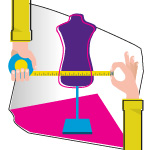 We only provide our readers with premium content – well developed pieces of information provided in a clear way, reading of which does not give you the impression of losing your time. Sounds cliche, but in order to make that happen you need to know the profile of your recipients. You might think: “Can’t be easier, they all work in the same organisation!” But the bigger the organisation, the more departments and units it combines, the harder it is to meet everyone’s expectations.
We only provide our readers with premium content – well developed pieces of information provided in a clear way, reading of which does not give you the impression of losing your time. Sounds cliche, but in order to make that happen you need to know the profile of your recipients. You might think: “Can’t be easier, they all work in the same organisation!” But the bigger the organisation, the more departments and units it combines, the harder it is to meet everyone’s expectations.
What to do: get to know your employees, devote some time to them, ask questions, learn about their requirements first hand. Your task is to reconcile all the differences, so that everyone can find something really absorbing in every (or at least every second) newsletter. If your readers are very different, you might think about readers segmentation and sending two newsletters (or more) to different groups distincted via research.
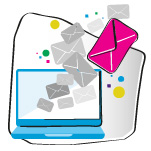 Remember that your employees receive tens or even hundreds of emails every day. You need to get through to them and make sure your newsletter is not overlooked.
Remember that your employees receive tens or even hundreds of emails every day. You need to get through to them and make sure your newsletter is not overlooked.
What to do:your task is to create a layout which is: a) characteristic, so that the the recipients know what it is that has just popped into their email box, and b) aesthetic, making it pleasant to read. Catchy title and headword, eye-catching header, interesting graphics, a little bit of color – these are all wanted elements. The more time you spend on developing a good layout the less time you will lose later on correcting it.
Simple and exhaustive
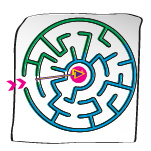 What kind of content do you like best when you have no time for going deep into it? One that seems reader-friendly, so that you don’t need to guess where to go next to find out more about the subject.
What kind of content do you like best when you have no time for going deep into it? One that seems reader-friendly, so that you don’t need to guess where to go next to find out more about the subject.
What to do: convey information in a concise and possibly simple way, even when writing about a highly complex project. While at work, nobody has time to analyze every sentence in details. When writing about something light, like an office party, your goal should be to set the readers in a good mood ☺ Whenever you can, that means whenever the character of the news allows, keep it easy (naturally within the limits set by your company’s organizational culture).
When you are not able to present the subject in an exhaustive way, provide specific links (e.g. Intranet) or contact information (e.g. emails address).
Let’s meet!
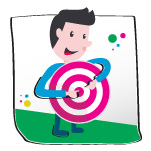 Nothing encourages to read a newsletter more than the possibility to read something that concerns ourselves in it. Let’s be honest – my own article, pictures of colleagues from my department, report from common activity, accolade following a project that you were involved in… no one wants to miss that. Make use of it!
Nothing encourages to read a newsletter more than the possibility to read something that concerns ourselves in it. Let’s be honest – my own article, pictures of colleagues from my department, report from common activity, accolade following a project that you were involved in… no one wants to miss that. Make use of it!
What to do: engaging your readers should be your priority. Find people who can contribute by writing valuable articles, provide photos, interesting titbits. Add information about successes, individual and group achievements, charity actions, anything that could bring employees closer and allow them to get to know one another. If there is no other space for this, you can use the newsletter to present profiles of employees – both longstanding and new.
In episodes
 We live in the era of series, and few of us could frankly say they haven’t got a favorite one on Netflix. Here’s an idea to attract readers – your own miniseries in the newsletter!
We live in the era of series, and few of us could frankly say they haven’t got a favorite one on Netflix. Here’s an idea to attract readers – your own miniseries in the newsletter!
What to do: the subject must be catchy. Start with lifestyle and arrange a few “episodes” about unusual traditions in various countries or make a few parts of an amusing dictionary with phrases from the different languages used by your employees. Add nice-looking images and there it is! Always add a reminder that there is another portion of news coming in the next issue.
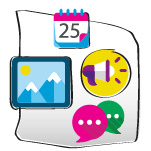 Since we tend to “read” images nowadays, the newsletter should include photos, illustrations, drawings, schemes or infographics. Even the most interesting content will not get positive feedback if it’s a solid block of text, giving the reader the impression of looking at a huge, unattractive blob.
Since we tend to “read” images nowadays, the newsletter should include photos, illustrations, drawings, schemes or infographics. Even the most interesting content will not get positive feedback if it’s a solid block of text, giving the reader the impression of looking at a huge, unattractive blob.
What to do: every material should be divided into reader-friendly sections, another thing is to make it as clear as possible. Whenever you can, replace stock images with photos or illustrations provided by employees.
What to write about?
 And here’s a handful of examples of subjects that you can or even should write about in your internal newsletter.
And here’s a handful of examples of subjects that you can or even should write about in your internal newsletter.
Serious topics: sector news and information; results of research carried out inside the company or concerning relevant areas; updates of company’s products and services; information about loyalty programs and benefits for employees; announcements/reminders about training courses; reports on projects implementation; information about new customers, contractors; principles of using company’s property; changes in corporate structure.
Light topics: information about events, such as integration meetings, Christmas meetings, party reports; competitions organized inside the company; amusing articles, regular columns, letters to the person editing the newsletter, holiday wishes.
The newsletter must contain your contact data and information encouraging to cooperate by sending ideas and inspirations. Engage your employees and try to meet their needs, create a newsletter which is truly for them. Let’s do this!
